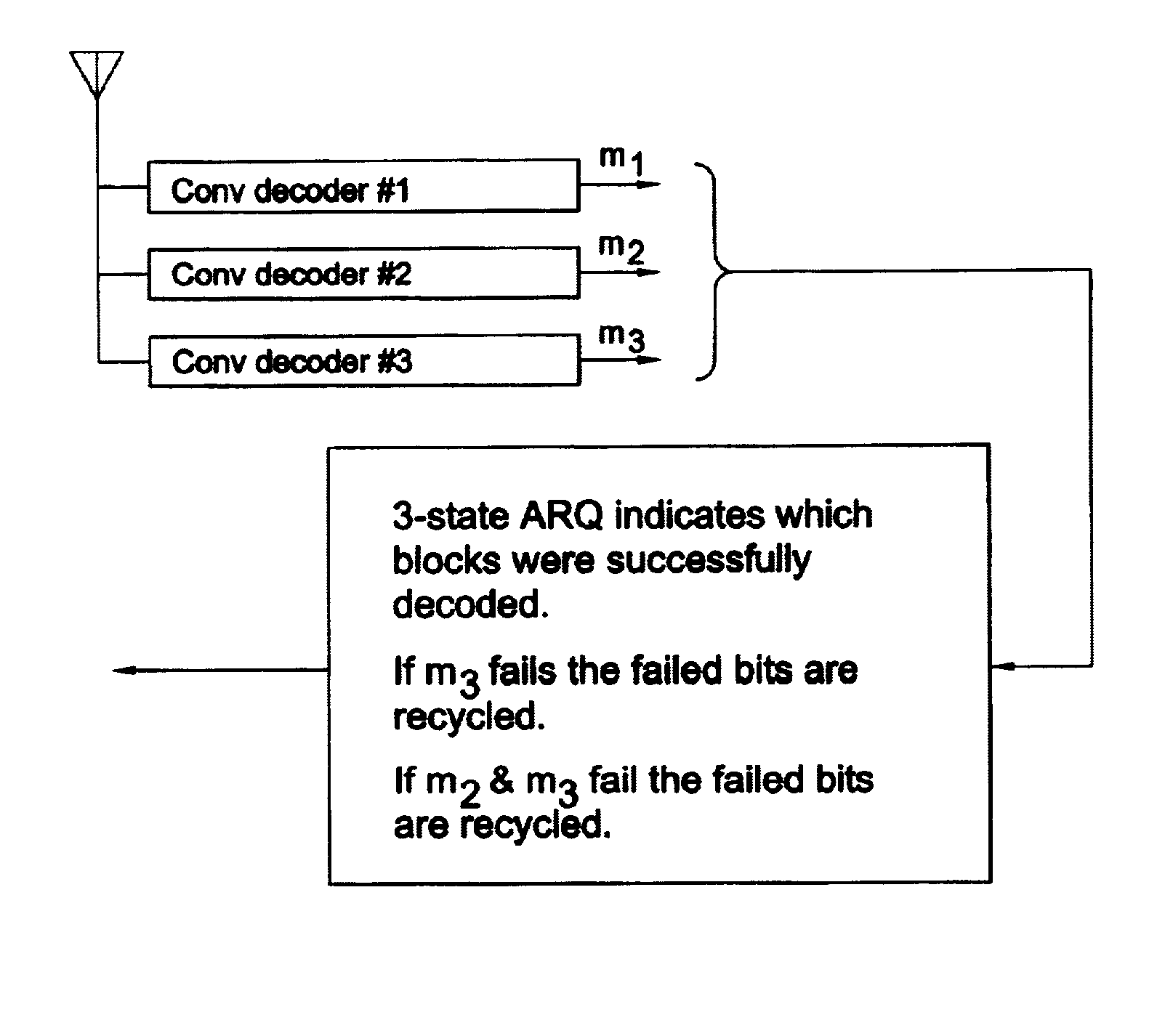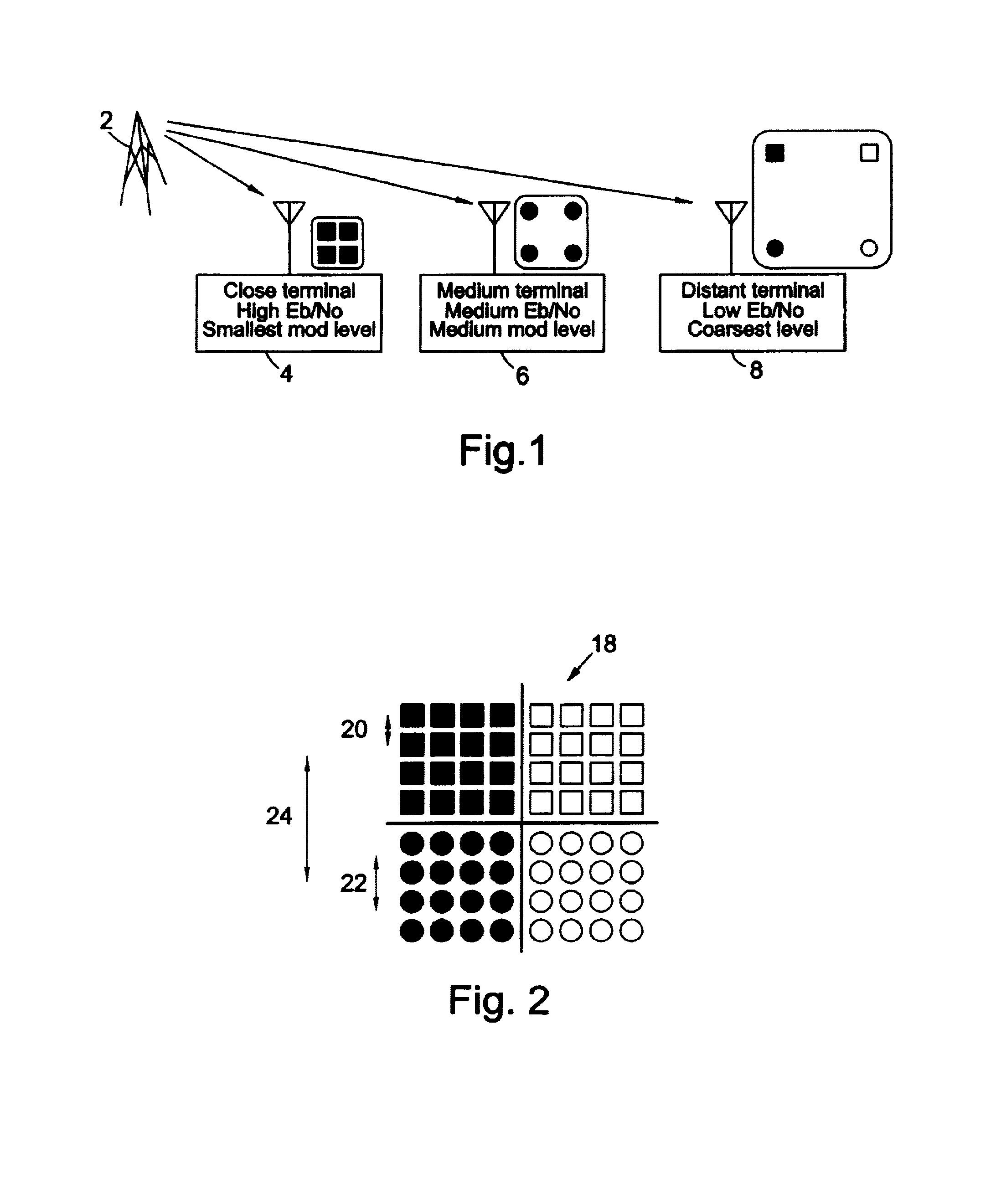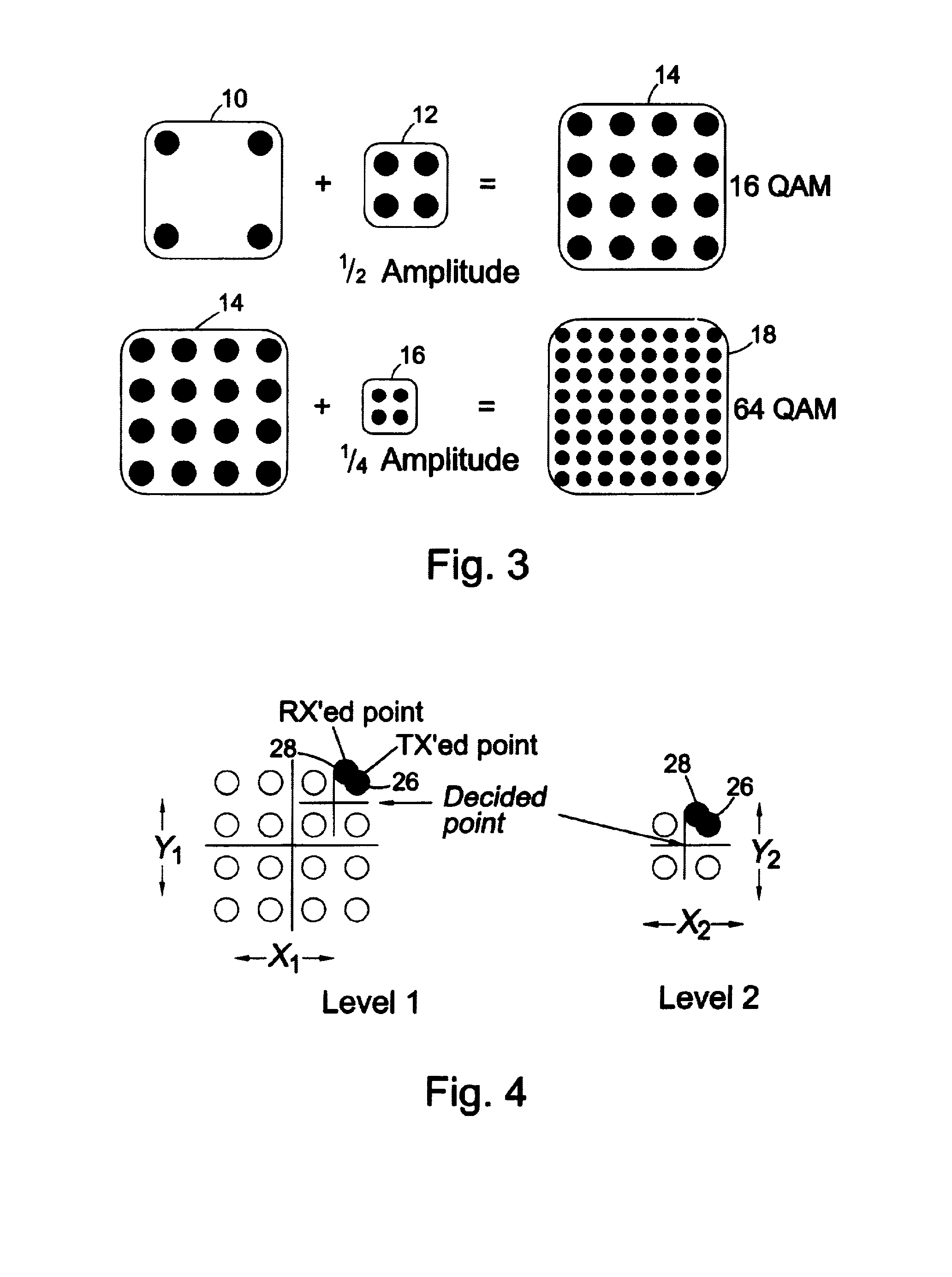Methods and apparatus for transmitting and receiving data over a communications network in the presence of interference
a technology of communication network and transmission method, applied in the direction of digital transmission, channel coding adaptation, phase-modulated carrier system, etc., can solve the problems of degrading the performance of other terminals, affecting the network throughput of any terminal, etc., and achieve the effect of relieving a potential bottleneck in the uplink channel
- Summary
- Abstract
- Description
- Claims
- Application Information
AI Technical Summary
Benefits of technology
Problems solved by technology
Method used
Image
Examples
Embodiment Construction
[0038]With reference to FIG. 1, a base station 2 (for example a 3G base station sending data packets) is arranged to transmit data to a plurality of terminals 4, 6 and 8 which are located at respectively increasing distances from the base station 2.
[0039]As a result of the differing distances between the respective terminals 4, 6 and 8 and the base station 2, the terminals experience different carrier to noise (Eb / No) ratios. Thus the closest terminal 4 (having the highest Eb / No) is able to demodulate signals which have been transmitted at lower amplitude by the base station 2 than the more distant terminals 6 or 8.
[0040]Thus as will be described in more detail below, the base station is arranged to transmit a signal which is modulated at several different amplitude levels. The highest amplitude modulation may for example, be the only modulation which the distant terminal 8 is able to demodulate, whereas the close terminal 4 is likely to be able to demodulate all modulation levels.
[...
PUM
 Login to View More
Login to View More Abstract
Description
Claims
Application Information
 Login to View More
Login to View More - R&D
- Intellectual Property
- Life Sciences
- Materials
- Tech Scout
- Unparalleled Data Quality
- Higher Quality Content
- 60% Fewer Hallucinations
Browse by: Latest US Patents, China's latest patents, Technical Efficacy Thesaurus, Application Domain, Technology Topic, Popular Technical Reports.
© 2025 PatSnap. All rights reserved.Legal|Privacy policy|Modern Slavery Act Transparency Statement|Sitemap|About US| Contact US: help@patsnap.com



